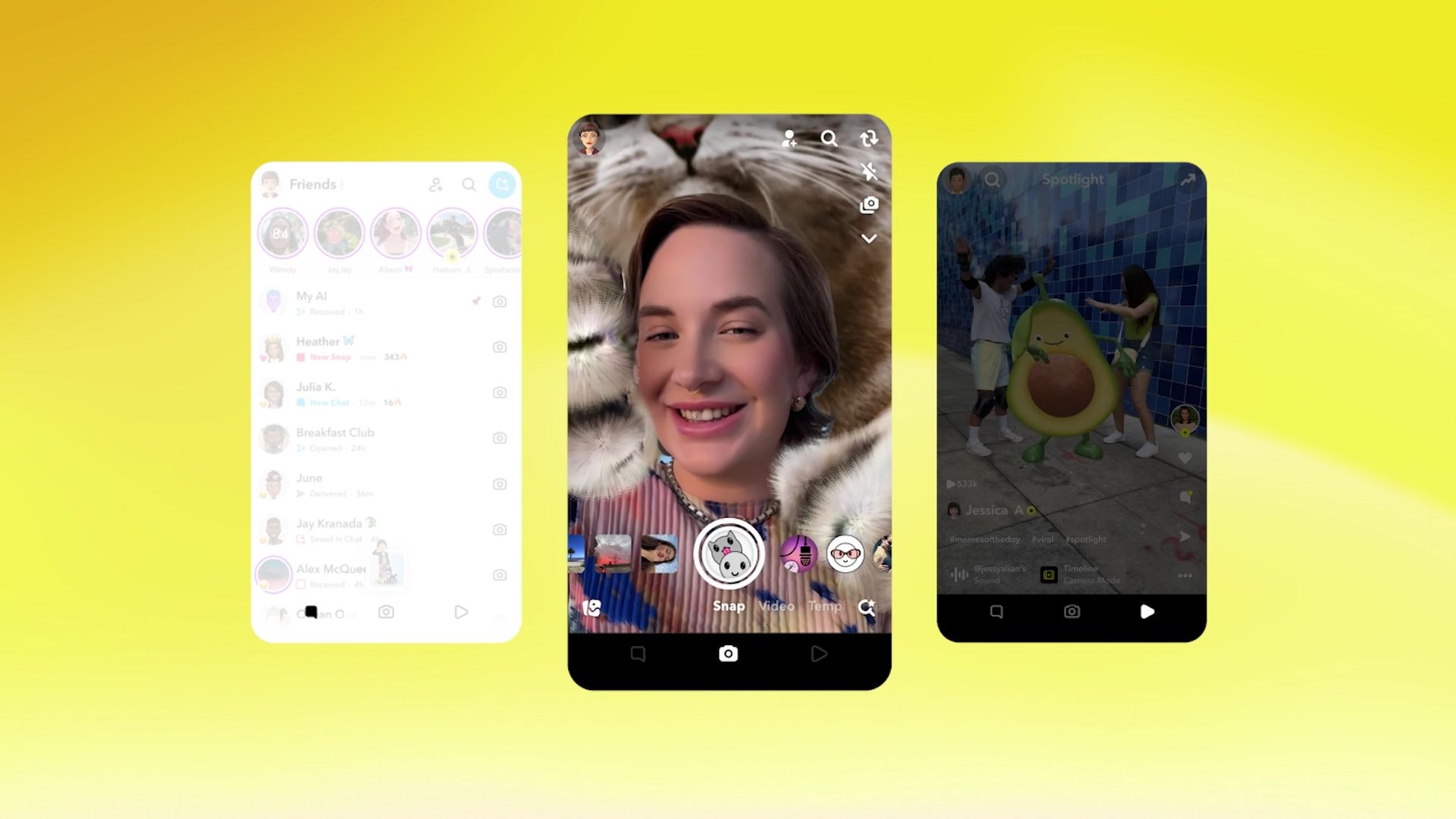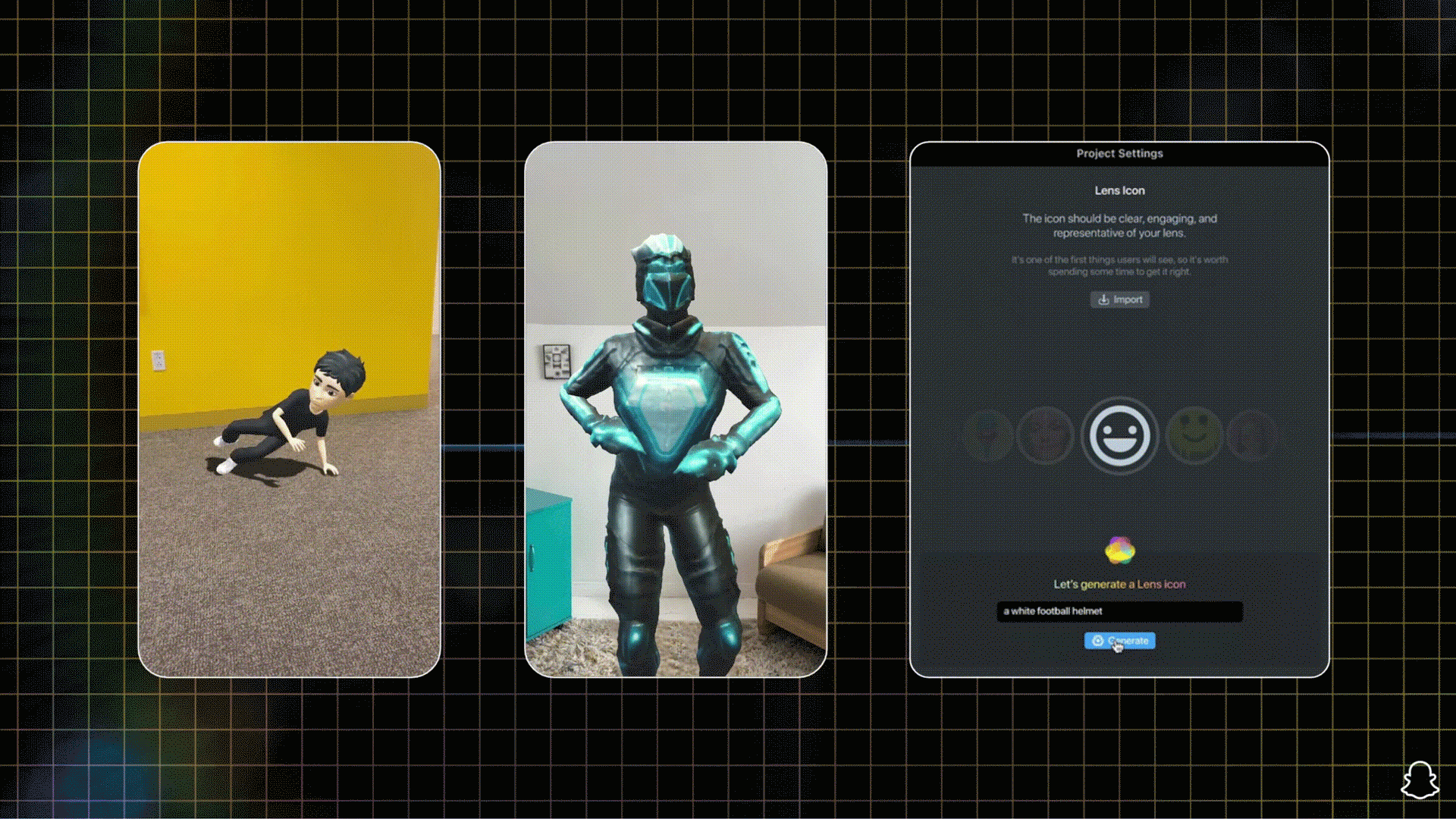Snapchat is rolling out its biggest redesign in years, aimed at simplifying the user experience. The update reduces the interface from five main tabs to three: one for messaging and stories, another for the camera, and a final tab dedicated to a full-screen video feed similar to TikTok.
The streamlined design, dubbed “Simple Snapchat,” was unveiled at Snap’s annual partner summit in Los Angeles. CEO Evan Spiegel highlighted the update’s main goals of making content easier to find, encouraging user interaction through the camera, and blending Stories with conversations. The overhaul marks a major change for Snapchat’s 850 million users, creating a more immediate experience.
Snapchat simplifies with new design
The first change in Snapchat’s redesign is reducing the app’s interface to just three main sections. One tab focuses on messages and stories, grouping them for smoother transitions between conversations and content. The Snap Map, previously a separate tab, now finds its place within the Messages tab, streamlining the user experience.
The second tab, Camera, remains central to Snapchat’s identity. The update ensures that users can quickly access the camera to share moments or engage with the augmented reality features Snapchat is known for.
The third tab is to the right of the camera: a feed that combines content from media publishers and creators in a TikTok-like full-screen video format. This tab combines Spotlight, Snapchat’s TikTok competitor, with content from media outlets such as The Wall Street Journal and the Daily Mail. This new setup simplifies content discovery by placing creator-driven videos alongside professional media content, giving users more diverse video options in one place.

Why the redesign? Simplifying for engagement
Snapchat’s redesign is about more than looks. The company wants to be recognized as a place to watch videos, like TikTok and Instagram. The new look makes it easier to find content and encourages more interaction. Snapchat is also merging stories and messages to make it easier for users to switch between conversations and content.
The new approach will also help content creators. Spiegel said creators who share short videos to draw viewers into their Stories will find the updated layout even more useful. By integrating Stories directly into the messaging tab, the platform makes it easier for users to interact with content, which will help creators gain more visibility.
Snapchat’s redesign is also a strategic move. The platform monetizes media content and ads that run alongside creators’ videos. By rolling out the redesign slowly, Snap wants to see how users react and ensure the new layout improves ad performance without disrupting the user experience.

Snapchat’s new My Selfie feature uses AI
Snapchat also added a new AI-generated selfie feature called “My Selfie.” This tool lets users create AI images of themselves using photos from the app. People are excited about the feature, but they also have privacy concerns. The first time you use My Selfie, you agree to let Snap use your likeness in ads.
If users agree to the terms, the “See my selfie in ads” setting is on. Snap says users’ images will only be used in ads they can see. But having this option turned on by default may be off-putting. To turn the feature off, go to your profile and select “My Selfie” from the settings menu. Snapchat says it doesn’t share user data with third-party advertisers. Spokesperson Maggie Chernoff said advertisers don’t have access to user-generated AI data or private information like Memories. Snap doesn’t use My Selfies in ads now, but the company’s terms suggest that could change.
Focused on video and privacy
Snapchat’s new look shows the company is trying to make the app easier to use while keeping it up to date. The platform aims to become a go-to place for communication and media consumption. Snapchat’s new features show the company’s interest in AI-driven personalization. However, users should be aware of the privacy implications of these features. The redesign and AI features show that Snapchat wants to adapt to user needs. It will be interesting to see whether this will lead to increased engagement or more privacy concerns.
Image credits: Snapchat





